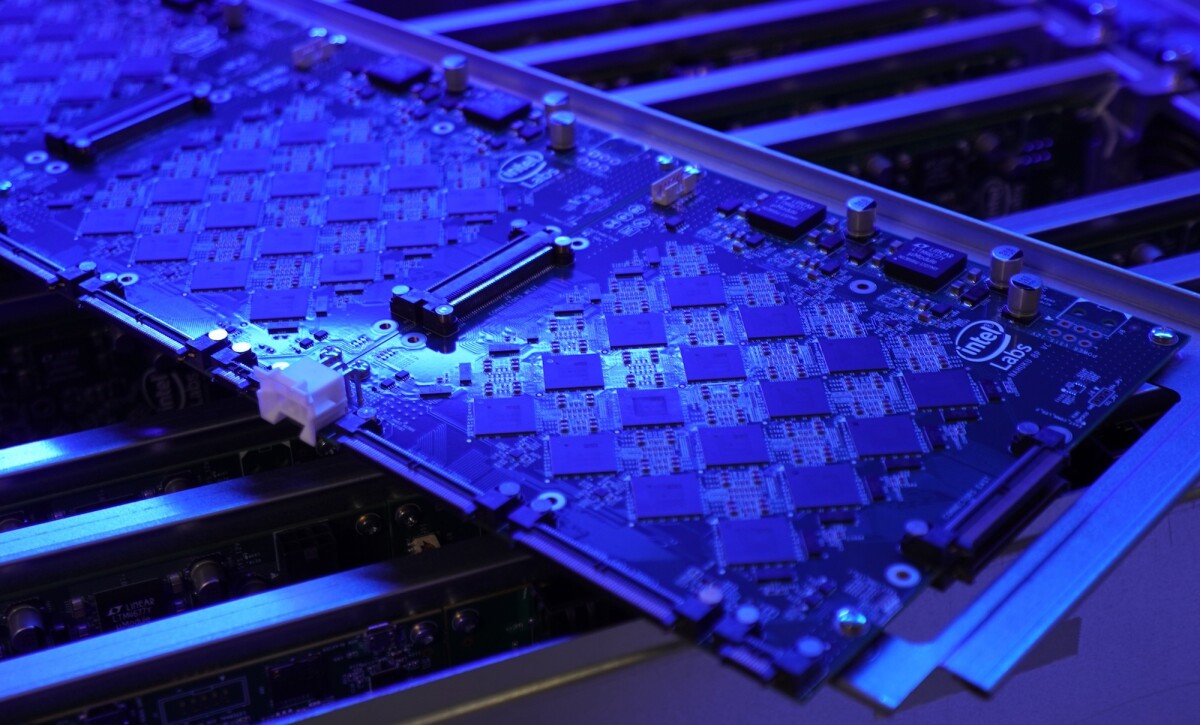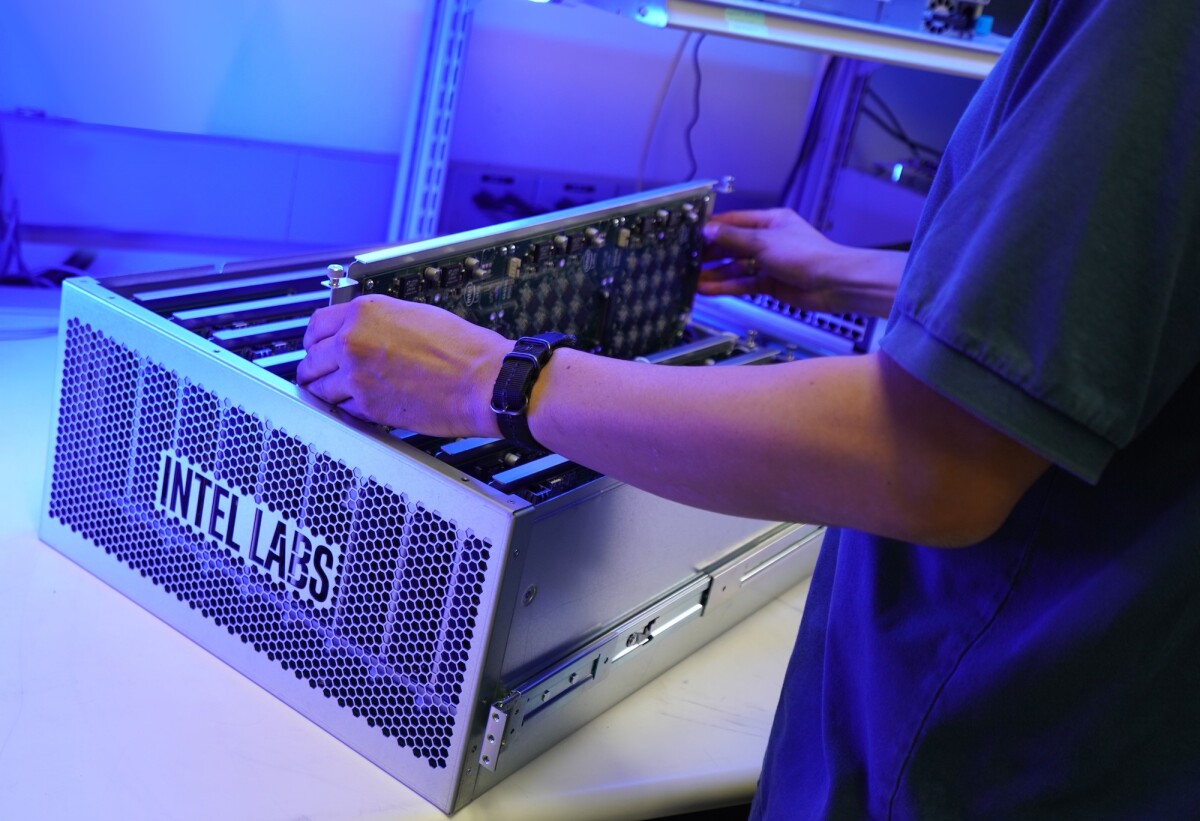[ad_1]
As spectacular as computer systems have gotten, they nonetheless pale compared to nature’s model – the mind. As such scientists have began designing laptop chips that work in the same strategy to the mind, utilizing synthetic neurons and synapses. Now Intel has unveiled its strongest “neuromorphic” computing system to this point. Named Pohoiki Springs, this technique packs in 100 million neurons, placing it on par with the mind of a small mammal.
Conventional laptop chips are glorious at shortly crunching large numbers that may make a human’s eyes water. However they aren’t as adept at summary issues like recognizing the distinction between canines and cats, which we are able to do seemingly with out pondering.
Machine studying is an rising type of synthetic intelligence that’s aiming to enhance this. By coaching a system on hundreds or hundreds of thousands of examples of what it must know, it might be taught patterns and grow to be superb at that sort of job.

Intel Company
And that’s the kind of computing system that Intel is now experimenting with. The Loihi neuromorphic processor packs 130,000 synthetic neurons and 130 million synapses, and capabilities like a human mind. Conventional computer systems course of info in a single space then go it on to a different for storage. However the Loihi – just like the mind – performs each capabilities in the identical spot, saving time and power. Plus, the chip rewires its connections over time, boosting that effectivity additional.
Intel says that Loihi is as a lot as 1,000 occasions sooner and 10,000 occasions extra environment friendly at sure duties than typical processors. Only in the near past, for instance, it was put to work figuring out and categorizing smells in a brand new type of digital nostril.
Pohoiki Springs is the newest and most superior system to make use of this processor. It’s made up of 768 Loihi chips in a single field the dimensions of 5 normal servers. That reinforces the variety of neurons to an astounding 100 million, placing it within the ballpark of the mind of a small mammal. And better of all, it runs on a fairly small quantity of energy, not like different energy-guzzling servers.

Intel Company
This new system shall be accessible through the cloud, permitting members of the Intel Neuromorphic Analysis Group (INRC) to faucet into it to sort out extra complicated issues.
“Pohoiki Springs scales up our Loihi neuromorphic analysis chip by greater than 750 occasions, whereas working at an influence stage of beneath 500 watts,” says Mike Davies, INRC director. “The system allows our analysis companions to discover methods to speed up workloads that run slowly at this time on typical architectures, together with high-performance computing (HPC) techniques.”
Intel says Pohoiki Springs may very well be put to work in many alternative areas of computing, akin to figuring out optimum paths for driving instructions or deliveries, minimizing danger in inventory portfolio returns, or airline scheduling.
Supply: Intel
[ad_2]









